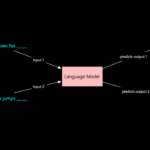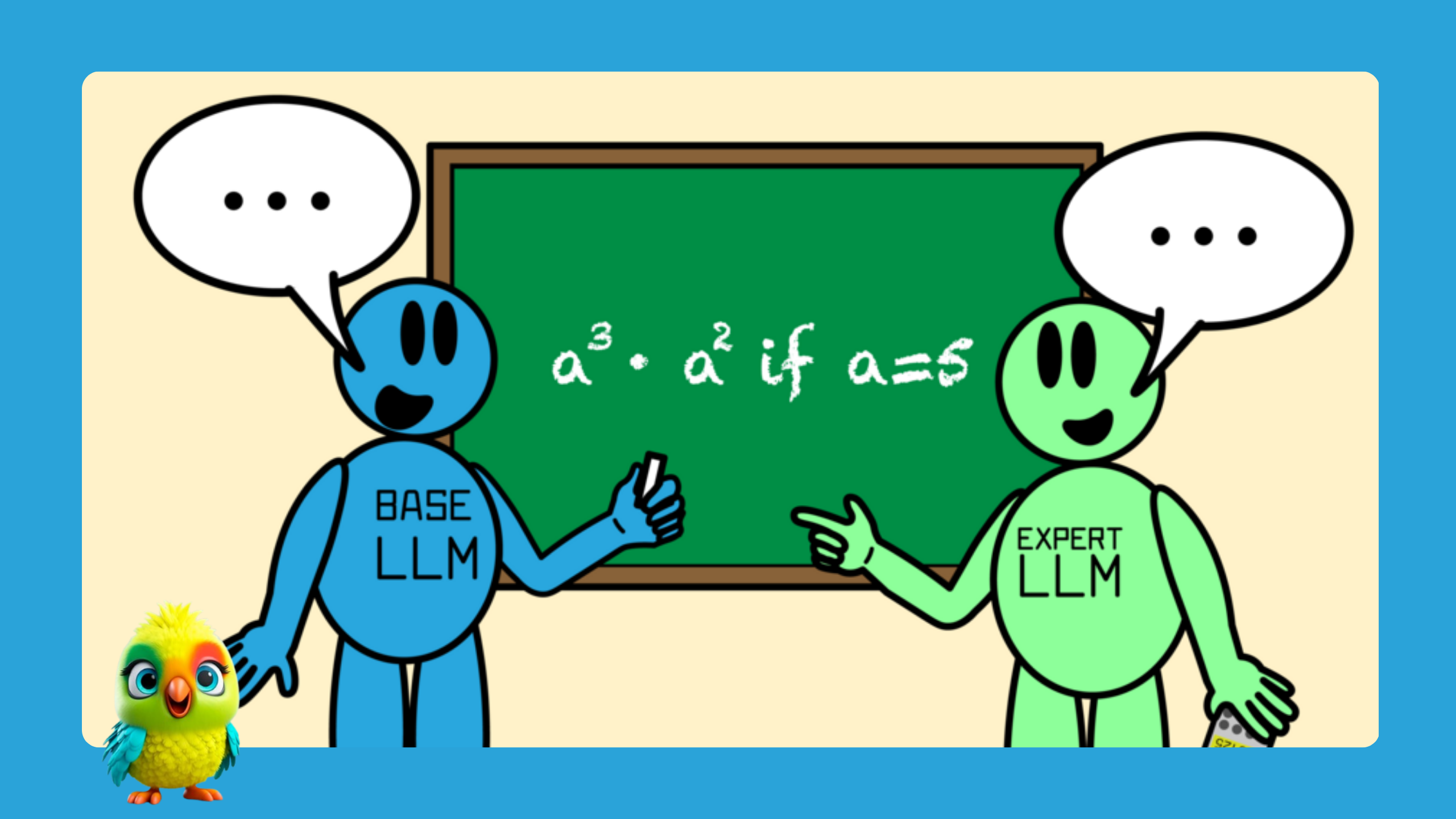Abstract: The field of artificial intelligence is in the midst of a paradigm war. On one front, autoregressive large language models (LLMs) like GPT-4, LLaMA-3, and Qwen2 have established dominance in textual reasoning, demonstrating remarkable prowess in comprehension, logic, and instruction following. On another, the world of multimodal AI—processing and generating across text, images, audio, and video—has remained fragmented, a cacophony of specialized architectures struggling to find a harmonious, unified voice. Existing approaches often resort to complex hybrid systems, stitching together separate encoders and decoders with intricate cross-attention mechanisms. These systems, while powerful, are frequently cumbersome, difficult to train, and suffer from a critical flaw: they force a trade-off between deep reasoning, nuanced understanding, and high-fidelity generation. In this extensive analysis, we explore MMaDA (Multimodal Large Diffusion Language Models), a groundbreaking new class of foundation model that boldly challenges this status quo. By leveraging the power of diffusion processes not just for generation but as a core, unifying probabilistic framework, MMaDA combines state-of-the-art textual reasoning, multimodal comprehension, and text-to-image generation into a single, elegant, and coherent architecture. We will dissect its technical innovations, contextualize its performance within the broader AI landscape, and argue that it represents a significant leap toward truly general-purpose, multimodal intelligence.
1. The Multimodal Fragmentation Problem: A Landscape in Need of Unification
The quest for a unified intelligence that can seamlessly reason across and generate different modalities is a cornerstone of AI research. However, the path has been fraught with engineering and theoretical challenges. Historically, unified models have been hamstrung by three fundamental limitations:
1.1 Architectural Complexity and Inefficiency: The dominant paradigm is the “hybrid” model. These systems typically employ a vision encoder (e.g., ViT) to process images into embeddings, a text encoder/decoder (e.g., a Transformer) for language, and a complex fusion mechanism (e.g., cross-attention) to combine them. This results in bloated parameter counts, cumbersome training pipelines requiring carefully balanced losses, and significant computational overhead. The system is not so much unified as it is a federation of specialized components.
Read: The Ultimate Guide to Handling Missing Values in data preprocessing for machine learning
2. The Post-Training Alignment Bottleneck: Even when models are successfully pre-trained, aligning their capabilities with human intent through post-training (e.g., instruction tuning, reinforcement learning) is immensely challenging. Strategies designed for autoregressive text generation often fail to translate to other modalities, creating a misalignment where a model might be a brilliant reasoner but a poor generator, or vice versa. This is particularly acute in non-autoregressive settings like diffusion, where the generation process is iterative and probabilistic.
3. The Performance Trade-Off: This fragmentation inevitably leads to a Pareto frontier of compromises. Models optimized for text-to-image generation, like Stable Diffusion, lack sophisticated reasoning capabilities. Models excelling at visual question answering, like GPT-4V, cannot generate images. This trade-off limits their practical utility in applications requiring an integrated loop of perception, reasoning, and creation.
MMaDA enters this landscape with a radical proposition: what if a single model architecture, trained with a single learning objective, could master all these tasks? Its answer lies not in the well-trodden path of autoregressive next-token prediction, but in the denoising process of diffusion models.
Read: Mixture of Experts the new AI models approach by Scaling AI with Specialized Intelligence
2. Core Architectural Innovations: The Pillars of MMaDA
MMaDA’s prowess is built upon three foundational technical innovations that work in concert to overcome the historical challenges of multimodal AI.
2.1 The Unified Diffusion Foundation: A Modality-Agnostic Core
At its heart, MMaDA is a diffusion model. But unlike its predecessors, which were primarily applied to images, MMaDA treats *all* data—text and images—through the same probabilistic lens. This represents a monumental shift from hybrid architectures to a truly modality-agnostic core.
Unified Tokenization: The first step to unification is a common representation. Text is tokenized using a standard tokenizer (e.g., from LLaMA). Images are not processed as continuous embeddings but are instead converted into sequences of discrete semantic tokens using a powerful pretrained image quantizer like MAGVIT-v2. This transforms an image into a “foreign language” that the model can learn to speak fluently.
The Unified Masked Denoising Objective: The model is trained with a single, elegant objective: predict the original, unmasked tokens given a noised version of the sequence. This objective is agnostic to modality. The loss function is formalized as:
$$
\mathcal{L}_{\text{unify}}(\theta) = -\mathbb{E}_{t, x_0, x_t} \left[ \frac{1}{t L’} \sum_{i=1}^{L’} \mathbb{I}[x_i^t = \text{[MASK]}] \log p_\theta(x_i^0 | x_t) \right]
$$
Here, $x_0$ is the ground truth sequence (text or image tokens), $x_t$ is its noised version at timestep $t$, and $L’$ is the sequence length.
Why This Matters: This unified framework is profoundly efficient. It eliminates the need for separate encoders and complex fusion modules. More importantly, the diffusion process naturally models uncertainty and enables multi-step refinement. This is not just beneficial for generating high-quality images; it is a powerful metaphor for reasoning itself—a process of iteratively refining a noisy thought into a clear conclusion.
Read: Implementing a Custom Website Chatbot From LLMs to Live Implementation For Users
2.2 Mixed Long Chain-of-Thought (CoT) Fine-Tuning: Teaching the Model to Reason
A powerful architecture is inert without the right training data. The second innovation addresses the “cold-start” problem: how to teach a diffusion model to perform complex, multi-step reasoning across modalities.
Unified CoT Format: MMaDA uses a standardized format for reasoning trajectories that works for any task:
|<special_token>| <reasoning_process> |<special_token>| <result>
This format forces the model to internalize a structured reasoning process before producing an answer, whether that answer is a text conclusion or a sequence of image tokens.
Curated Data for Cross-Modal Transfer: The training data consists of high-quality, diverse CoT trajectories for textual reasoning, multimodal QA, and text-to-image generation. Crucially, by mixing these modalities during fine-tuning, MMaDA encourages cross-modal knowledge transfer. Improvements in logical textual reasoning positively impact the structural coherence of generated images, and enhanced visual understanding improves the accuracy of image-based QA.
Training Objective: The fine-tuning uses a mask-prediction loss aligned with the core diffusion principle, ensuring the model learns to reconstruct the final result based on the prompt and the reasoning context.
Read: Retrieval-Augmented Generation (RAG) enhances LLM text generation using external knowledge
2.3 Unified Reinforcement Learning for Diffusion (UniGRPO): Aligning with Complex Objectives
Reinforcement Learning (RL) has been a cornerstone of aligning LLMs with human preferences (e.g., via RLHF). However, standard RL methods like PPO are designed for autoregressive models and fail catastrophically when applied to the non-autoregressive, iterative denoising process of diffusion models. MMaDA introduces UniGRPO (Unified Group Relative Policy Optimization), a novel RL framework built for diffusion.
Structured Noising Strategy: Instead of generating complete responses from scratch, UniGRPO works on partially noised sequences. For a generated response, a random masking ratio is applied, creating a perturbed version. The model’s policy is then evaluated on its ability to denoise this masked sequence, exposing it to a diverse range of denoising challenges.
Policy Gradient for Diffusion: UniGRPO defines a policy gradient objective that incorporates a clipped surrogate reward and a KL-divergence penalty to prevent the model from diverging too far from its original, well-trained behavior (preventing “reward hacking”).
$$
J_{\text{UniGRPO}}(\theta) = \mathbb{E} \left[ \frac{1}{G} \sum_{i=1}^{G} \frac{1}{|o_i|} \sum_{t=1}^{|o_i|} \min\left( r_{i,t}'(\theta) \hat{A}_{i,t}, \text{clip}(r_{i,t}'(\theta), 1-\epsilon, 1+\epsilon) \hat{A}_{i,t} \right) – \beta D_{\text{KL}}(\pi_\theta’ || \pi_{\text{ref}}’) \right]
$$
The advantages $\hat{A}_{i,t}$ are computed in a group-relative manner, normalizing rewards across a batch of examples, which dramatically stabilizes training—a common issue in RL.
Diversified Reward Modeling: UniGRPO leverages different reward functions for different tasks: correctness and format fidelity for text, CLIP scores for multimodal understanding, and a combination of CLIP and aesthetic models (like ImageReward) for image generation.
Why This Matters: UniGRPO is a landmark contribution. It successfully bridges the gap between the low-level masked token prediction of diffusion and high-level, task-specific objectives. It allows MMaDA to be precisely aligned for performance, truthfulness, and quality across all its modalities within a single RL framework.
Read: Understanding Transformers: The Mathematical Foundations of Large Language Models
3. Experimental Performance: A New Benchmark for Generalization
The proof of any architecture is in its performance. The MMaDA-8B model was evaluated across a comprehensive suite of benchmarks, and the results are compelling.
Multimodal Understanding (POPE, MME, MMMU, VQAv2, GQA): MMaDA achieves performance comparable to or exceeding that of specialized understanding-only models. This demonstrates that its generative diffusion core does not come at the cost of perceptual or reasoning acuity.
Text-to-Image Generation (CLIP Score, ImageReward, GenEval, WISE): The model achieves state-of-the-art performance on metrics like CLIP Score and ImageReward. Most impressively, it shows superior performance on the GenEval benchmark, which tests complex compositional reasoning in images (e.g., “a red cube on top of a blue sphere”), and the WISE benchmark, which requires generating images containing specific world knowledge. This directly evidences the benefit of cross-modal knowledge transfer from its strong textual reasoning capabilities.
Textual Reasoning (MMLU, GSM8K, MATH, GPQA): MMaDA-8B is highly competitive with pure LLMs of similar scale, such as Qwen2-7B and LLaMA-3-8B, and outperforms other diffusion-based language models like LLaDA-8B on mathematical tasks. This definitively dispels the notion that diffusion models are inherently inferior to autoregressive models for logical reasoning.
Ablation studies confirmed the critical role of each innovation: Mixed Long-CoT was vital for cross-modal reasoning, and UniGRPO provided significant boosts in mathematical and geometric reasoning, as well as image quality.
Read: Understanding Tensors: A Comprehensive Guide with Mathematical Examples
4. Analytical Perspective: Implications for the Future of AI
MMaDA’s contributions extend far beyond its benchmark scores. It offers a new blueprint for AI development.
1. The Diffusion Paradigm is Richer Than We Knew: MMaDA proves that diffusion is not merely a powerful tool for image generation but a viable, and perhaps superior, foundation for general-purpose intelligence. Its iterative refinement nature is a powerful analogue for human cognition.
2. The Efficiency of Unification: By reducing architectural complexity, MMaDA points toward a more efficient path to general intelligence. A single model is easier to train, deploy, and maintain than an ensemble of specialized models.
3. The Emergent Power of Synergy: The observed cross-modal transfer—where improvement in one modality boosts performance in another—is an emergent property of unified training that hybrid models struggle to achieve. This suggests that true intelligence may best be cultivated in a model that learns all skills concurrently on a shared substrate.
4. Scalability: The success of an 8B parameter model strongly suggests that the diffusion-based approach is scalable. Future iterations with larger data and parameter counts could yield even more dramatic results.
Read: Every Model in Machine Learning (Supervised, Unsupervised, Regression) explained
5. Conclusion: A Unifying Path Forward
MMaDA represents a paradigm shift. It moves beyond simply assembling capabilities and toward synthesizing them into a coherent whole. Its three core innovations—a unified diffusion architecture, mixed long CoT fine-tuning, and the UniGRPO RL framework—work in concert to create a model that is not just a jack-of-all-trades but a master of many.
By demonstrating that a single model can achieve state-of-the-art performance in reasoning, understanding, *and* generation across text and images, MMaDA provides a compelling roadmap for the future of AI. It argues for a path of unification over fragmentation, of elegant probabilistic frameworks over complex engineered systems. The open-source release of its code and weights invites the entire research community to build upon this foundation. In the evolving narrative of artificial intelligence, MMaDA stands as a pivotal chapter, pioneering a path toward a future where AI systems can truly see, reason, and create in a unified and intelligent way.
Read: How Learning to Build AI Agents Changed My Life (And How It Can Change Yours Too)
References:
1. MMaDA: Multimodal Large Diffusion Language Models (2025) Open Source Code and Model Weights
2. Yu, L. et al. MAGVIT-v2: A State-of-the-Art Visual Tokenizer for Image and Video Generation.
3. Relevant paper on LLaDA: Long-Context Diffusion Language Models
4. Benchmarks: POPE, MME, Flickr30k, VQAv2, GQA, MMMU, MMB, SEED, CLIP Score, ImageReward, GenEval, WISE, MMLU, ARC-C, TruthfulQA, GSM8K, MATH, GPQA.






















